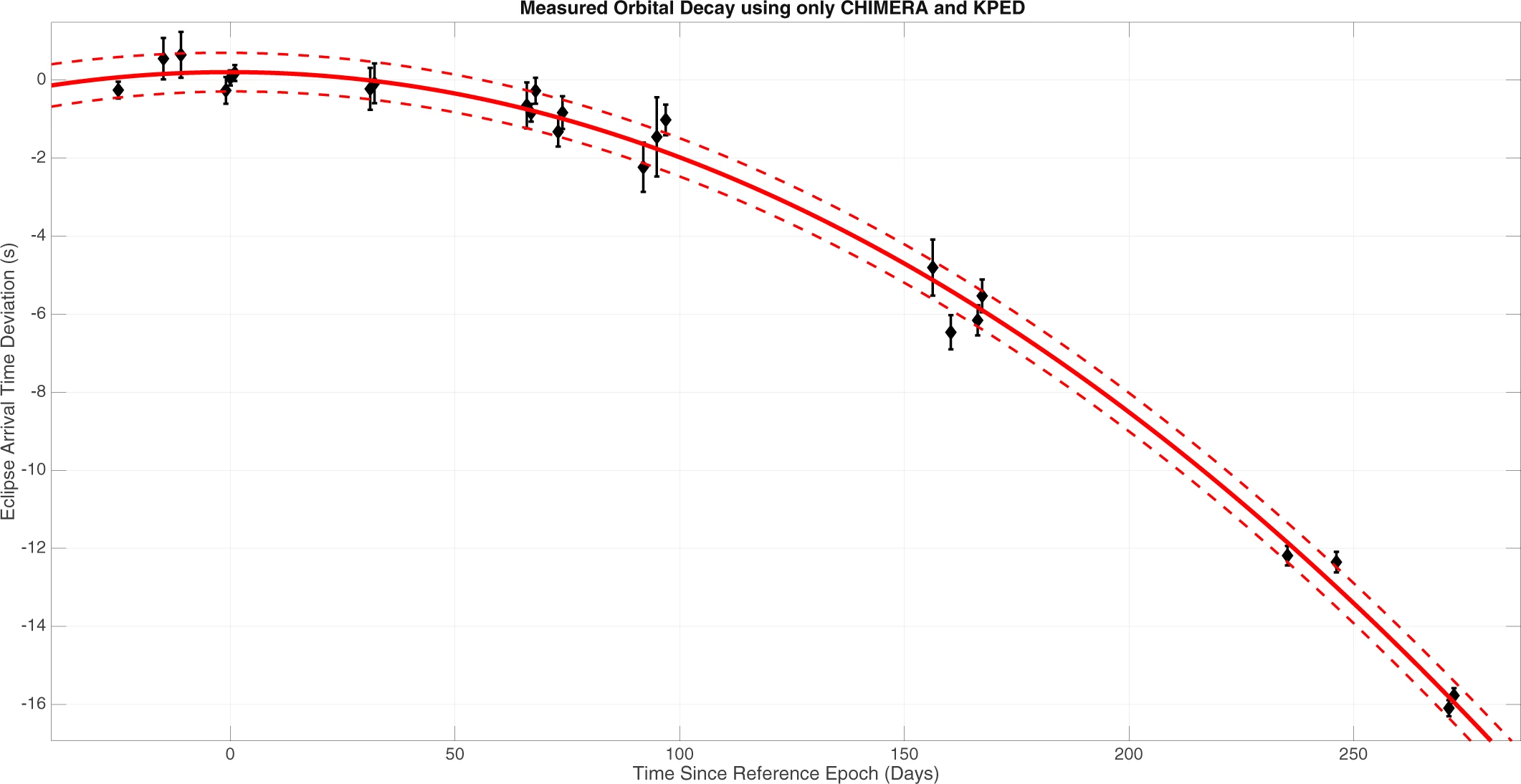Recently discovered and described: an eclipsing binary star system where both stars are white dwarfs. Better, they are in a really close orbit with an orbital period of only 6.91 *minutes.* Even betterer, the orbits are decaying.
Found: fastest eclipsing binary, a valuable target for gravitational wave studies
Sadly, there are a number of important details lacking from the article, and the paper the article is based on is behind a paywall. Other articles point out that the system, ZTF J1539+5027, is 7,800 light years away.
One important point seems a little confusing to me: the future of the orbital decay. On one hand, there’s this graph:

If I’m reading this correctly, the orbital period has lost 16 seconds in something like 270 days. But the orbital period is only 6.91 minutes/415 seconds long, meaning that if the trend remains (and stays linear, which is unlikely), then the stars will crash into each other in about 7,000 days = 19 years. The trend doesn’t show linearity, but acceleration. It would be easy enough to plug this graph into a spreadsheet and run the numbers, but I’m too lazy for that, so, in substantially *less* than 19 years, this star system should get suddenly really rather bright, akin to a Type 1A supernova.
But on the other hand, there’s this:
they are growing closer all the time, at a rate of around 26 centimetres per day, which means it’s going to be at least another 130,000 years or so until the orbital period is 5 minutes.
Muh? Clearly I must be mis-reading the graph. Because a supernova in a few years is way better than the stars being a little closer in geological time, and if life has taught me anything, it’s that when you have an interpretation that is Awesome and Cool and Exciting, and an interpretation that is “meh,” the meh-interpretation is almost always the correct one.